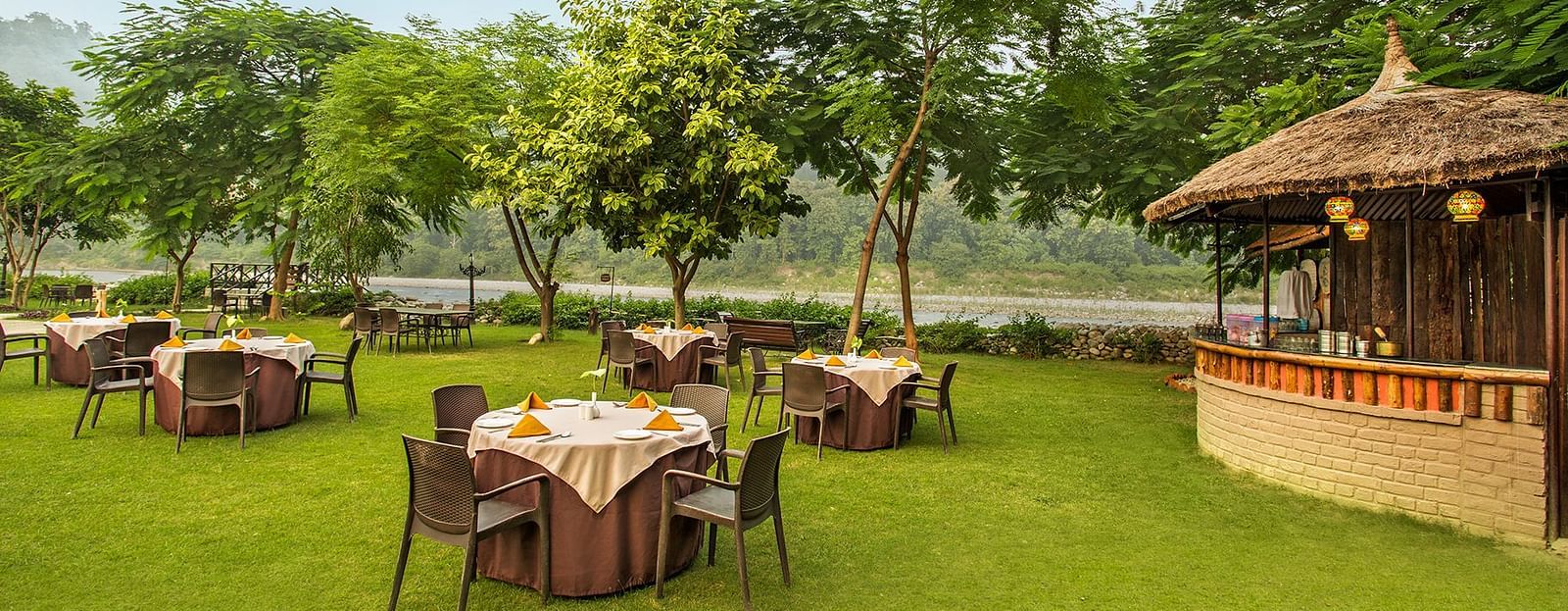

Home > The Riverview Retreat, Corbett > About Corbett > About Corbett
The Jim Corbett National Park
Jim Corbett National Park - the oldest national park in India, was established as far back as 1936, with the aim of protecting the endangered Bengal tiger. It was initially named Hailey National Park, after the Governor of the United Provinces - Sir Malcolm Hailey. In 1952, the name was changed to Ramganga National Park, and five years later, in 1957, it finally took on the name that it goes by today, inspired by Jim Corbett - the famous hunter-author-photographer-naturalist. The famous Project Tiger was also launched from this venue on April 1st, 1973. It is, today, beyond doubt, one of India's most attractive national parks, owing to its location at the foothills of the mighty Himalayas, lush greenery, and gorgeous mountainous landscape.
Spanning an area of over 520 square kilometres, this National Park is one of the very few in the country that is home to an abundance of wildlife. About 650 species of resident and migratory birds call the park their home, making it a virtual haven for bird watching enthusiasts. Through most of the Park flows the Ramganga River, on the banks of which lived a community in ancient times. It is believed that these people cleared away a tiny part of the forest, and made the area their home. Evidence in the form of terracotta figurines and ruined temples further corroborate the fact that the Ramganga valley was the home of an ancient civilization.
Main Flora
Sal, khair, ber, kuthber, bel, chbilla, dhak, semal, khingan, kharpat, rohini, bakli, pula, bamboo.
Main Fauna
Mammals: Tiger, leopard, elephant, spotted deer, sambar, nilgai, hog deer, barking deer, sloth bear, wild boar, ghural, langur and rhesus monkey.
Birds: Peacock, pheasant, pigeon, owl, hornbill, barbet, lark, myna, magpie, minivet, patridge, thrush, tit, nuthatch, wagtail, sunbird, bunting, oriole, kingfisher, drongo, dove, woodpecker, duck, teal, eagle, stork, cormorant, falcon, bulbul, flycatcher, red start and gull.
Reptiles: Indian marsh crocodile or mugger, gharial, king cobra, common krait, cobra, Russels viper, python and monitor lizard.
Getting to Corbett
Corbett is situated at a distance of about 250 kilometres from New Delhi, which makes it a 4-hour drive from the capital. It offers great connectivity through rail, road, and even air travel.
Road: Ramnagar is very well connected to major cities via road, which makes it easily accessible. The state government of Uttarakhand plies buses at regular intervals from Delhi, Morabad, Haldawani, and Nainital.
Rail: The railway station in Ramnagar receives trains from major cities like Delhi, Morabad, and Bareilly. Keep an eye out for Ranikhet Express, Corbett Link Express and Kathgodam Express, all of which directly make their way to Ramnagar.
- Corbett Link Express departs from the Old Delhi Railway Station at 2245 hrs and arrives at Ramnagar at 0530 hrs. It is another 10 Kms by taxi to The Riverview Retreat. The train has one First Class coach and the rest are Second Sleeper Coaches.
- Kathgodam Express departs from the Old Delhi Railway Station at 2245 hrs, arriving at Kathgodam at 0715 hrs. It is another 70 Kms by taxi to The Riverview Retreat. The train has 02 Second A/C Coaches and rests are Second Sleeper Coaches.
Air: For air travel, the closest airport is Phoolbagh, from where it would take you approximately a couple of hours to get to our resort in Corbett.
For more information on distance and directions, check out our location page.
Corbett National Park - Timeline
1820 - The British take over the park area from local rulers of Kumaon region.
1850 - Till 1850, heavy deforestation is undertaken by the British for timber.
1858 - First plans for preservation of forest areas surfaces.
1879 - The land is marked for preservation.
1884 - Aged 8, Jim Corbett shoots his first leopard.
1910 - Jim Corbett heads shikar parties to track and kill two man-eaters.
1910 - Corbett gives up hunting as a sport, decides to shoot only to protect the natives from man-eaters.
1934 - The reservation is declared as a National Park. Corbett helps with its cartography.
1936 - Registered under the United Provinces National Parks Act and named the Hailey National Park.
1947 - India becomes independent.
1952 - The park is renamed as Ramganga National Park.
1955 - Jim Corbett passes away at Nyeri.
1957 - The park is renamed once again in the honor of Jim Corbett.
1973 - Chosen as the first tiger reserve in the country and "Project Tiger" is launched the following year.
2000 - The park becomes a part of the newly delineated state of Uttarakhand.
Corbett Park Guidelines
- Walking or trekking inside the national park is strictly prohibited.
- Avoid perfumes and bright clothes, wear clothes of colour which merge with the natural surroundings.
- Carry a litter bag while entering the Tiger Reserve and bring back non-biodegradable litter.
- Do not make noises/talk loudly inside the forest.
- Do not smoke in the forest. Do not collect plants or pluck flowers.
- While taking photographs or shooting videos, do not disturb the wild animals. (For eg. use of flash guns)
- Shouting, teasing or chasing animals or attempts to feed them are prohibited. Respect local traditions, customs, and religions.